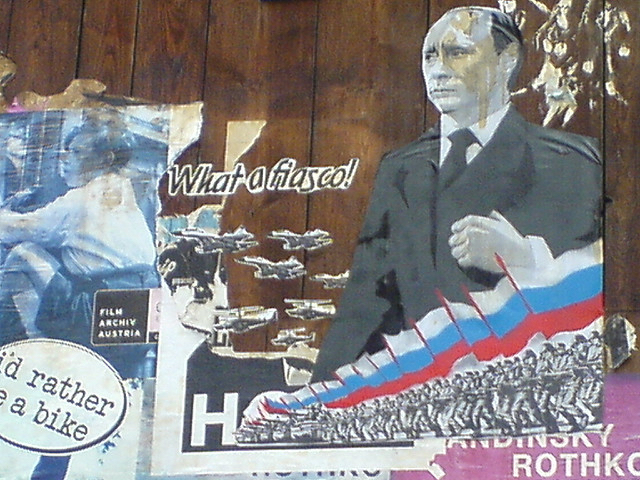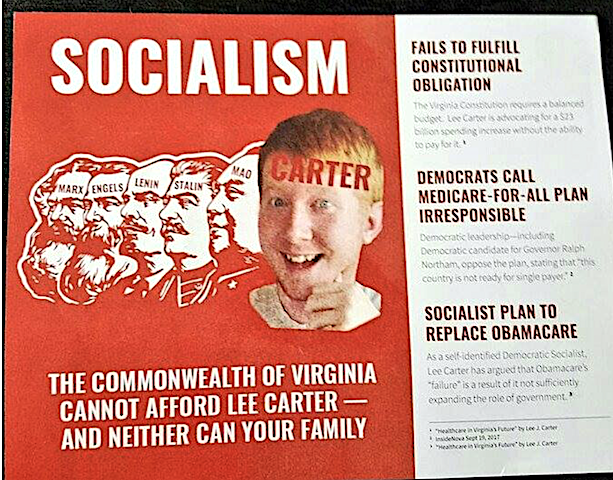The electoral process in the United States fulfills the same sort of morbid curiosity as watching Russian car wreck footage on YouTube. You know there’s no point, but it’s so strange that it’s difficult to look away.
The primary field has not shrunk to its final proportions. Hillary Rodham Clinton and Bernie Sanders continue to spar over issues in ways that seem calculated to elicit yawns from an electorate obsessed with the reality show antics on the Republican side.
There, the bell is finally tolling for Marco Rubio’s campaign, the candidate having proven himself unable to match the level of anger and sheer lunacy being emitted by Donald Trump and Ted Cruz.
Still far removed from the landscape of actual events and circumstances, the current contours of the American political imaginary are now coming more clearly into focus.
It is the nature of political imagination that it deviates from the real (in the sense of material conditions). But the imaginary itself is a matter of interest. The distorted reality of wishes and desires constitutes a reservoir for the direction of the will. The political imaginary exists at the intersection between the political and popular culture. Mainstream media is simultaneously constructs and is constructed by the imaginary. From the media side, few have so perfectly embodied this process as the writer and producer Aaron Sorkin. In his two most prominent shows, The West Wing (1999-2006) and The Newsroom (2012-2014), Sorkin has given voice to a particular stratum of this imaginary: that of the Blue Dog Democrat.
For those unfamiliar with the minutiae of US politics, Blue Dog Democrats are a grouping on the right wing of the Democratic Party, originally assembles by the Texas Democrat, Representative Pete Geren (who would later switch parties entirely). Accounts of the origin of the name vary, but all center around the premise that more conservative members of the Democrats are systematically stifled by those further to the left.
Historically, the membership this particular caucus has tended toward instability. This is due in part to the fact that some of its members eventually simply switch parties. Others simply succumb to the vicissitudes of the electoral process since, as Harry Truman once noted, “[g]iven the choice between a Republican and someone who acts like a Republican, people will vote for the real Republican all the time.”
Still, as the success of Sorkin’s work illustrates, this has been and remains space in the American political psyche for a sort of moderate democratic politics abiding slightly to the left of Ronald Reagan. The West Wing features the Democratic administration of Jeb Bartlett, a New England Democrat with an Ivy League doctorate in economics. His administration speaks the language of idealism, and Bartlett himself (played with gusto by Martin Sheen) is given to Kennedy-esque speechifying, repeatedly calling on the better angels of America’s nature to address the nation’s problems. Still, under the surface his administration comprises experts and wonks who are, as it happens, almost exclusively male.
This is, it is worth noting, a very pronounced gender politics to everything that Sorkin does. It is probably fair to say that, taken as a whole, The West Wing could usefully be employed by HR departments in order to illustrate the concept of mansplaining. Hardly an episode passes without some plucky but overly idealistic (or simply misinformed) female being straightened out by one of the senior male characters. There are points at which the show deviates from this, particularly in the arc which the Allison Janney (C. J. Craig) character shifts from being the press secretary to the chief of staff. But one swallow does not make a spring, and one female character who doesn’t have to listen to her male colleagues administering correction doesn’t constitute balanced gender roles.
More broadly, the central thrust of the show seems to be that there are good hearted people in government who care a lot and who could achieve moderate, piecemeal reform (and even the occasional political miracle) if they were just freed from small minded zealots in both parties. Conservative Democrats, so the narrative of the show contends, really do share a lot of ground with their more “progressive” fellows, if only the latter would quit posturing a resign themselves to the power of ineluctable facts.
Bartlett, the technician-turned-orator is an example of the way that idealism and moderation can be fused together. In the later seasons, problems confronted include access to higher education (solved after two of the wonks have a heartfelt conversation with an average American in a Midwestern bar) and the Israel-Palestine conflict (settled by just getting everyone together and being pragmatic). The underlying message is that solutions can be found where there are moderate people of good will.
Much of this is a spectacular exercise in radical centrism. There are moderates on both sides and unreasonable zealots. The middle ground is a sort of splitting the difference between what the two groups of moderates believe. This is, essentially, the mantra of American media culture. The Democrats have their problems, including (but not limited to) the fact that Obama expanded the drone war to a scope undreamt of by his ostensibly more militaristic predecessor. But their deviations from human decency are in line with the standard technocratic approach to political amoralism. They at least have a certain degree of (misguided) realism going for them. The Republican Party has, by contrast, produced pure crazy for most of the last two decades.
This impression is strengthened significantly when one looks at domestic policy. Putting aside for a moment the obsession on the right with allowing corporations to have the same rights as human beings, or with the related insistence that women’s health care must subject to the whims and superstitions of their employers, the bright line distinction is in economics. Today’s Democrats have staked out a position about which Ronald Reagan would have found little to object: moderate corporate and capital gains taxes and a policy of demand expansion based on a conservative reading of Keynesianism.
There is a lot about this that one could criticize. Over and above the fact of the systematically exploitive character of the system as a whole, this mode of economic development tends to regressive effects on income distribution. But at least no one on that side of the spectrum has engaged in wild talk about debasing the currency, or insisted that a return to the gold standard would be a good idea.
The dollar is as strong as it’s been in a decade. The likely result of a return to the gold standard would be a worldwide deflationary catastrophe of biblical proportions. But somehow the mainstream media in the United States seems intent on creating an equivalence between moderate technocratic capitalism (which is unfortunate) and economic bedlam.
In The Newsroom, Sorkin’s more recent project which aired for three years on HBO, the man in charge seems to have taken some of this to heart. True, The Newsroom still contains more mansplaining per episode than practically anything else on television, and the show’s penultimate episode did suggest that men accused of rape should somehow get the benefit of the doubt unless there’s actual film of them doing it, but at least Sorkin seemed to get that there was a segment of the Republican Party that had become an incubator for serious crazy.
The show’s main presenter, Will McAvoy (played by Jeff Daniels), is that rarest of beasts on the North American continent: a moderate Republican. He is, in fact, so moderate that he doesn’t really espouse any positions that Republicans (at least since the days of Wayne Morse) actually hold. He spends the best part of an episode railing against the evils of the Tea Party and its corps of associated zealots on behalf of a moderate version of Republican politics that barely existed five years before The Newsroom aired, and is now simply a relic of a bygone era.
Taken together, The West Wing and The Newsroom present a sort of history of the fall for American postwar capital “L” liberalism. There is a certain irony that many progressives (and people further to the left) seem determined to compare the current political moment to Germany in the late 1920s/early 1930s. The differences are numerous, but one important one is that Germany in those years experienced an evacuation of the political center, as moderate political parties lost out to those on both the leftward and rightward extremes of the political spectrum. In the United States, by contrast, one party has been systematically colonized by its own lunatic fringe, while the other has simply come to roost at whatever political triangulation determines to be the center of the spectrum.
The imagined world of American liberalism is interesting for a lot of reasons, not least because of the caesura between the values that it wishes it espoused and the elite technocracy that it evinces in practice. The rightward edge of the spectrum is immune to their rhetoric, enmeshed as they are in the paranoid fantasy world of anarcho-capitalism. As for those one the left, perhaps all that is needed is for a man to explain our errors to us.
Photograph courtesy of Robert Huffstutter. Published under a Creative Commons license.





